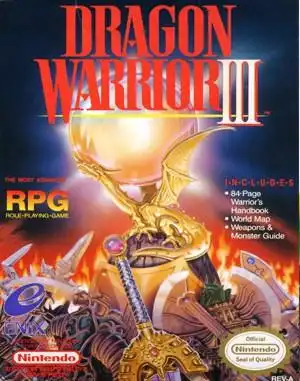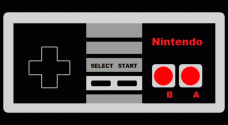Why Dragon Warrior III NES Remains an RPG Masterpiece
Step back in time to an era when 8-bit adventures reigned supreme and sprawling worlds fit onto tiny cartridges. Among the panth eon of legendary role-playing games on the Nintendo Entertainment System, few cast a shadow as long or as fondly remembered as Dragon Warrior III NES. Released stateside in 1991, this final chapter in the original Erdrick trilogy wasn't just a sequel; it was a revelation that pushed the boundaries of what players expected from an NES RPG.
For many, this was the defining RPG experience of their childhood, a game that demanded countless hours, graph paper maps, and hushed playground discussions about secret caves and powerful spells. But why does the NES version of Dragon Warrior III still hold such a special place in the hearts of retro gamers?
A World Unveiled: Scale and Ambition
Dragon Warrior III on the NES didn't just offer a larger world than its predecessors; it presented an entire world, literally. Players started in the familiar realm of Alefgard, first explored in the original Dragon Warrior, only to discover a vast, interconnected overworld map spanning continents, oceans, and even a dark, mirrored underworld. This sense of scale was unprecedented for the time and platform, fostering a true feeling of grand adventure and exploration.
The game masterfully built upon the lore established in the first two titles, culminating in an epic quest to confront the ultimate evil, Baramos, and uncover the true identity of the legendary hero, Erdrick.
Revolutionary Features for the 8-Bit Era
What truly set Dragon Warrior III NES apart were its innovative gameplay mechanics that felt incredibly deep and flexible for 1991.
- The Class System: This was a game-changer. Instead of pre-defined party members, you recruited companions at the Alltrades Abbey (Darma Temple in the Japanese version) and assigned them one of several classes: Warrior, Pilgrim (Cleric), Mage, Merchant, Goof-Off (Jester), Thief, and even the powerful Sage. This allowed for immense customization and replayability, letting players craft their ideal party composition.
- Class Changing: Even better, characters could change classes later in the game, retaining a portion of their learned spells or abilities. This added another layer of strategic depth, allowing players to build truly unique heroes.
- Day/Night Cycle: A simple yet immersive feature, the world map and towns visually changed from day to night. Certain events, characters, or shops were only available at specific times, encouraging players to explore and wait.
- Monster Medals: While not strictly necessary, collecting these rare drops added an extra layer of collection and challenge for dedicated players.
These features, commonplace in modern RPGs, felt revolutionary on the NES and contributed significantly to the game's depth and longevity.
The NES Experience: Graphics, Sound, and Grinding
Playing Dragon Warrior III NES today is a direct link to the past. The graphics, while simple by modern standards, were vibrant and detailed for an 8-bit game, featuring memorable monster designs by the legendary Akira Toriyama. The world map, towns, and dungeons had distinct visual styles.
Koichi Sugiyama's iconic soundtrack is instantly recognizable and deeply nostalgic. From the uplifting overworld theme to the tense battle music and the charming town melodies, the music perfectly captured the mood of the adventure and is etched into the memory of anyone who played the game.
Yes, like many RPGs of the era, DW3 involved grinding. Random encounters were frequent, and leveling up was essential to survive increasingly difficult challenges. While this might deter some modern players, it was part of the charm and challenge back then, making victories feel earned and progression deeply satisfying.
Why It Remains a Classic
Dragon Warrior III on the NES wasn't just a great game for its time; it's a testament to smart design and ambitious scope on limited hardware. It provided a massive, engaging world, deep character customization through its class system, and an epic story that concluded the saga begun in the very first game.
It set a benchmark for future RPGs and solidified the Dragon Quest (as it's known globally now) series' place as a titan of the genre. Revisiting the NES version today, with its specific quirks, translation nuances, and the raw, unfiltered 8-bit presentation, offers a unique nostalgic hit that later remakes, while excellent, can't quite replicate. It's the version many of us first experienced, the one that fueled our imaginations and kept us glued to our CRT screens late into the night. It's truly a classic RPG.
Frequently Asked Questions About Dragon Warrior III NES
- Is Dragon Warrior III the same as Dragon Quest III? Yes, "Dragon Warrior" was the name used for the series in North America on the NES and SNES due to a trademark conflict. It's the same game as Dragon Quest III.
- How long does it take to beat Dragon Warrior III on NES? Completion time varies greatly depending on playstyle and grinding, but a typical playthrough for the main story can range from 30 to 50+ hours.
- What are the best classes in Dragon Warrior III NES? There's no single "best" party, as it depends on strategy. Warriors, Mages, and Pilgrims are standard strong choices. Thieves are great for finding items, and Sages are powerful magic users (often created by changing a Pilgrim or Mage class).
- Can I still play Dragon Warrior III NES today? The original NES cartridge is required for authentic hardware play. The game has also been remade on various platforms (SNES, GBC, mobile), but the original 8-bit experience is unique to the NES.
Dragon Warrior III on the NES is more than just a video game; it's a piece of gaming history, a challenging adventure, and a source of pure, unadulterated retro joy. If you have the chance to play it, prepare for a journey that defined a generation of RPG fans.


